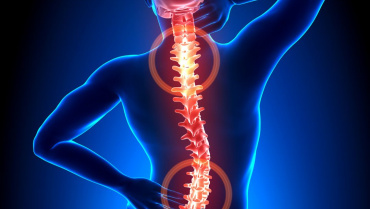You may not know it, but your doctor is not telling you everything about your cholesterol and cardiovascular disease risk. But before you start questioning your doctor, it isn’t because they are intentionally hiding information. It is because standard cholesterol labs only scratch the surface of your cardiovascular story. With heart disease topping the chart as the leading cause of death in the United States, it is essential to accurately assess cardiovascular risk. The US National Institutes of Health estimates that about half of people between the ages of 45 and 84 have atherosclerosis but may not be aware of it. This is because these standard cholesterol labs only predict 40% of those at risk for heart disease and stroke. Who wants to be in the 60% that is missed?!
In this post, I will share the limitations to the basic cholesterol labs, why those numbers do not give you the full picture, and what advanced biomarkers you should be asking for so you can make the very best decision for your health.
Before we dive in, as a reminder, most cardiovascular disease begins with atherosclerosis, which is the process in which fat and cholesterol infiltrate into the walls of the arteries creating inflammation, plaque formation, as well as narrowing and hardening of the arterial wall. This increases the risk of high blood pressure, heart attack, stroke, and vascular dementia. This is the process we want to prevent by early and accurate detection.
Basics
Let’s first start with the standard cholesterol lab markers that are traditionally run. These included Total Cholesterol (TC), Low Density Lipoproteins (LDL), High Density Lipoproteins (HDL), and Triglycerides (TAGs).
- Total Cholesterol: Cholesterol is essential to membrane structure and a precursor to the synthesis of steroid hormones, bile acid and vitamin D. Cholesterol itself does not cause atherosclerosis. Only when it is bound to atherogenic lipoproteins and becomes trapped within the arterial wall does it become part of the atherosclerotic process.
- Low Density Lipoproteins (LDL-C): Dubbed the “Bad” cholesterol, LDL is a fat transporter that circulates in the blood, moving cholesterol around the body to where it is needed for cell repair, hormone synthesized and other activities. LDL-C is the amount of cholesterol carried by these LDL particles. It is called the “bad” cholesterol because it has the potential to deposit cholesterol and fat inside your arteries where it can form plaque and cause heart disease.
- High Density Lipoproteins (HDL-C): Called the “Good” Cholesterol because HDL’s primary function is to transport excess cholesterol and fat obtained from peripheral tissues to the liver. The liver expels this excess cholesterol and fat from the body in a process called reverse cholesterol transport.
- Triglycerides (TAGS): Triglycerides are a type of fat found in the blood. They are also the most common type of fat in the body. Triglycerides come from extra calories the body does not use. Unused calories are stored as triglycerides in adipose tissue as well as the liver. When the body needs energy, it releases triglycerides. Triglycerides are reflective of sugar and carbohydrate intake.
Limitations
LDL is the marker most often used by doctors to assess cardiovascular risk. Despite its extensive use in predicting risk, it has become a sub-optimal marker and heart disease continues to occur at an increasing rate despite the use of LDL lowering therapies like statins.
The standard calculation of LDL doesn’t provide the particle size (see below for more on this), which could underestimate the risk for some people. For example, someone with normal LDL levels could have a high proportion of dense, small LDL particles, which could put them at higher risk for heart disease since dense particles are more damaging to the arteries. It also does not include an evaluation of lipoproteins such as Lipoprotein A and Apolipoprotein B (more on these next!), which are arguably just as important if not more so than LDL.
Additionally, these basic lab markers do not assess inflammation. Systemic and local inflammation plays a central role in the development of cardiovascular disease and inflammatory biomarkers have been shown to predict cardiovascular risk independent of the standard cholesterol labs.
Finally, blood labs only give us what is floating around in the blood. It does not show us if plaque has indeed formed. A Coronary Artery Calcium Score is a non-invasive CT scan that measures the amount of calcified plaque in your heart’s coronary arteries. The score helps identify plaque and calculate your risk of a heart attack or other cardiovascular event. About half of people have cholesterol deposits in their arteries by age 40. If heart disease is the leading cause of death, why aren’t calcium cardiac scores being recommended just like mammograms and colonoscopies?
Advanced Biomarkers
The next obvious question is what do I ask my doctor to run for a more accurate assessment of my risk? Below is the list to bring to your next appointment.
- The NMR LipoProfile (Labcorp) (or Cardio IQ at Quest): This is a more reliable measure of LDL that directly counts the number of LDL particles (LDL-P) and whether they are large or small. LDL-C only tests for the total amount of cholesterol carrier by LDL. Studies have shown that smaller LDL particles carry greater potential health risks than larger particles. Smaller particles are better able to penetrate the arterial wall and have a longer circulation time. The high risk group has HIGH LDL-P and LOW LDL-C, while the lowest risk group has HIGH LDL-C with LOW LDL-P. This is because those that are the most likely to have high LDL-P with low LDL-C are those with either small LDL particles, high triglycerides, or both. This explains why small LDL particles, while no more atherogenic on a per particle basis than large particles, are a marker for increase heart disease risk.
- Lipoprotein a: Lp(a) is cholesterol rich LDL with an extra protein (Protein A) and it also carries one molecule of Apolipoprotein B (see next marker). Lp(a) can promote the uptake of LDL into blood vessel walls and its structure can inhibit enzymes that dissolve clots. This may promote accumulation of clots in the arteries.
- Apolipoprotein B: ApoB is a protein that plays a key role in transporting cholesterol and triglycerides from the liver and digestive system to the cell for energy. ApoB is a more accurate measure of the risk of atherosclerosis than LDL because ApoB particles can get trapped within the arterial wall resulting in inflammation and initiating the atherosclerotic process.
- Oxidized low-density lipoprotein: OxLDL is a particle that can contain peroxides and is a marker of oxidative stress. It’s formed when oxidative stress modifies the ApoB subunit on LDL cholesterol (LDL). It can promote atherosclerosis through inflammatory and immune activation which drives the formation of macrophage foam cells. The accumulation of these foam cells within vessel walls eventually leads to the development of plaque.
- High Sensitivity C Reactive Protein: hs-CRP is a protein that measures general levels of inflammation in your body. Inflammation is a primary driver of atherosclerosis. Studies have shown that hs-CRP levels are associated with the severity of atherosclerosis, with higher levels in severe cases than in mild or moderate cases.
- Lipoprotein-associated phospholipase A2: (Lp-PLA2) is an enzyme that plays a role in the inflammation of blood vessels and is thought to promote atherosclerosis. Increased levels of Lp-PLA2 are produced by macrophages and foam cells within the intima of the artery. The more macrophage involvement, the more risk of arterial damage and rupture. Lp-PLA2 also interacts with oxidized LDL, which increases inflammation and enhances a proatherogenic state.
- Homocysteine: Elevated homocysteine levels can damage the lining of arteries and make blood clot more easily, which can increase the risk of blood vessel blockages. High levels can indicate a deficiency in vitamins B6, B12, or folate, which the body needs to break down homocysteine. It may also be suggestive of a mutation in the MTHFR gene.
Personalized Care
We all know that upgrading diet, adding appropriate supplementation, engaging in regular exercise and stress management can significantly help reduce the risk of atherosclerosis and heart disease. But how do you know which changes and additions are best for YOU? All personalized care starts with in depth testing. Knowing your body’s unique biochemical signature with more precise and accurate testing empowers you to make the best health decisions for your body and will keep you healthy into your golden years!
If your doctor is not willing to run these labs, we are able to do it for you at BeWell. Let us know if you are interested and we will provide a quote.
Laura Kelly, M.A., MSACN, LDN, CNS





Add Comment